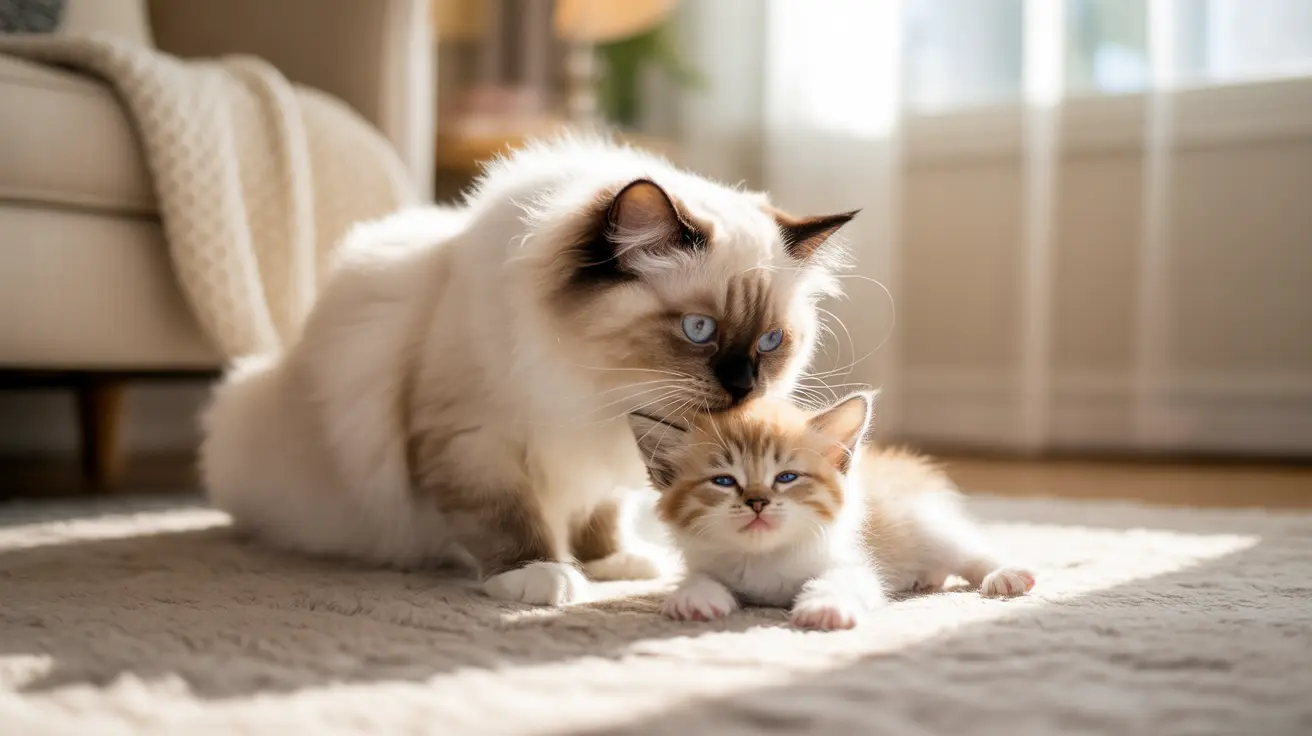The relationship between mother cats and their kittens is a fascinating blend of instinct, hormones, and natural behavior. While humans often wonder if mother cats experience emotional attachment similar to our own, the reality is more complex and rooted in biological imperatives.
In this comprehensive guide, we'll explore the nature of feline maternal bonds, how mother cats respond to separation from their kittens, and what science tells us about their emotional capacity for "missing" their offspring.
The Science Behind Maternal Bonds in Cats
Mother cats, known as queens, develop strong connections with their kittens primarily driven by hormonal changes. Two key hormones, prolactin and oxytocin, play crucial roles in establishing and maintaining maternal behavior. These hormones peak during pregnancy and nursing, creating powerful instincts to nurture and protect.
During the first few weeks after birth, mother cats rarely leave their kittens' side, demonstrating intense protective behaviors and constant care. This period is critical for kitten survival and development.
Natural Separation Process and Maternal Response
The mother-kitten relationship naturally evolves as kittens grow. Around 8-10 weeks of age, kittens begin showing independence, and the mother's hormonal drive to care for them gradually decreases. This process is nature's way of preparing both mother and kittens for eventual separation.
Most mother cats show little distress once their kittens reach the natural weaning age. Their focus shifts from nurturing to returning to their normal routines, a behavior that's completely natural and healthy.
Signs of Maternal Distress During Early Separation
When kittens are removed before the natural weaning period, mother cats may exhibit several behavioral changes:
- Increased vocalization or calling
- Searching behaviors
- Changes in appetite
- Restlessness or anxiety
- Excessive grooming
- Increased attention-seeking from humans
The Role of Timing in Kitten Separation
The timing of separation significantly impacts how mother cats respond. Premature separation (before 8 weeks) can cause genuine distress, while separation after natural weaning typically results in minimal reaction from the mother cat.
This difference in response highlights the importance of respecting natural feline development stages when breeding or fostering cats.
Long-term Recognition and Relationships
Unlike humans, mother cats generally don't maintain long-term emotional bonds with their grown kittens. Once kittens mature and develop their own scents and personalities, mothers typically treat them as they would any other cat, showing no special recognition of their former maternal relationship.
Frequently Asked Questions
Do mother cats feel sad or miss their kittens after they are separated?
Mother cats may show signs of distress if separated before natural weaning occurs (8-10 weeks). However, after proper weaning, most mothers readily return to their normal behavior without showing signs of missing their kittens.
How long does a mother cat typically show distress when her kittens are taken away?
If separation occurs at the appropriate time, most mother cats adjust within a few days. Early separation may cause distress lasting several days to weeks, though this varies by individual cat.
At what age is it best to separate kittens from their mother to minimize stress?
The ideal age for separation is between 8-10 weeks, when kittens are naturally weaning and developing independence. This timing minimizes stress for both mother and kittens.
Can a mother cat recognize and bond with her grown kittens later in life?
Generally, mother cats don't maintain special recognition of their grown kittens. They typically treat adult offspring as they would any other cat, without showing preferential behavior.
What behaviors indicate a mother cat is missing her kittens, and how can I help?
Signs include searching, calling, restlessness, and changes in eating patterns. To help, maintain the mother's routine, provide extra attention, and ensure a calm environment. These behaviors typically resolve naturally within a few days to weeks.
Conclusion
While mother cats form intense bonds with their kittens during early development, their experience of "missing" their offspring differs significantly from human emotions. Understanding this natural process helps cat owners provide appropriate support during separation while respecting feline nature and biological imperatives.






